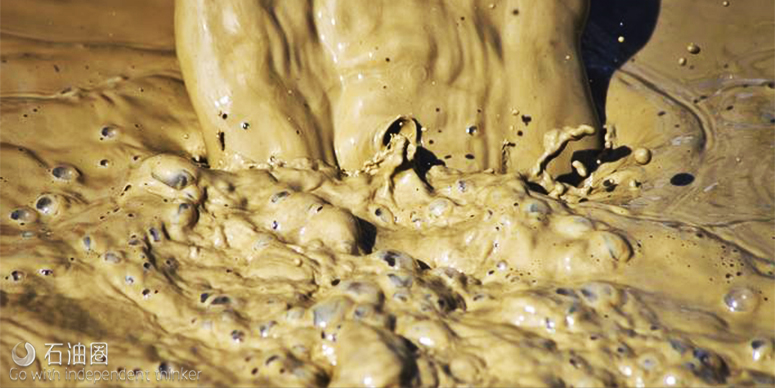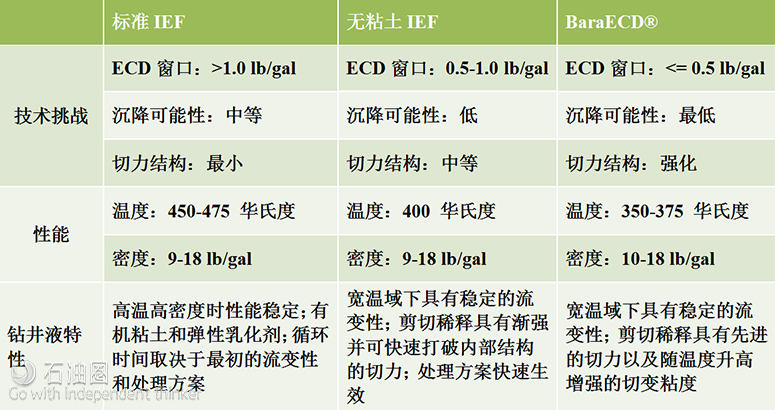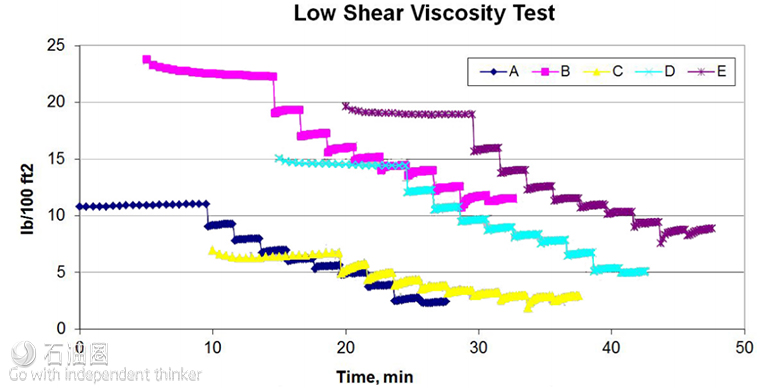BaraECD®
High-Performance Invert Emulsion Fluid for low ECD Applications
Narrow margin drilling applications require precise control of equivalent circulating density (ECD). Deepwater wells and wells with depleted zones and histories of fluid losses often have narrow operating windows between the pore pressure and fracture gradient. Traditional Invert Emulsion fluid systems typically maintain higher rheology to resist sag, which raises ECDs. The higher ECDs can lead to induced fractures, lost circulation, fluid losses, wellbore instability, and potential safety issues. All of these issues lead to non-productive time (NPT), remediation time, and increased costs. A low-ECD, sag-resistant fluid is needed to address these challenges.
Halliburton Baroid’s BaraECD® high-performance invert emulsion drilling fluid system was designed to provide low controlled ECD in narrow margin applications, while also providing necessary hole cleaning and resistance to barite sag. Built on the success of Baroid’s broad fluids portfolio, BaraECD® is a step-up from Baroid’s clay-free high-performance invert emulsion systems (IEF) and offers advanced fluid characteristics for the most technically challenging wells
Ideal for low pressure formations (including depleted zones), high angle drilling, highly deviated formations or slim wellbores, the unique chemistry of BaraECD® fluid provides a low fluid viscosity to minimize ECD, and excellent suspension properties to effectively clean the wellbore and avoid sag. Exceptional low end rheology is
achieved by novel chemistry, including an enhanced suspension package and advanced rheology modifier. The BaraECD® system is stable over extended periods of time and can be used for both drilling and running casing liners, increasing operators’control over pressure management
FEATURES
» Novel chemistry:
Enhanced Suspension Package
Advanced Rheology Modifier
Broad weighting agent selection
» ECD Windows focused:
Low viscosity resistant to barite sag
» Special fluid conditioning:
Preconditioned with hydraulic shearing unit
Stable in transit
Arrives ready for application
BENEFITS
» Optimized Drilling Performance:
Controlled ECD management
Improve hole cleaning
Avoid remediation and NPT
Reduce costs associated with fluid loss
» Improve Safety:
Improve HSE through pressure control
Reduce risk of stuck pipe and pack off
» Increase Access to Reserves:
Access to reservoirs previously inaccessible due to low ECD margins or economic constraints
» Easy to Apply:
No special equipment needed on site
APPLICATIONS
Baroid’s BaraECD® high performance invert emulsion drilling fluid systems are organophilic clay free and provide improved drilling performance. Relying on emulsion and polymer technology for rheology, BaraECD® provides a superior rheological profile and robust, yet fragile gels. BaraECD® fluid system can be customized for applications in different narrow margin formations to deliver engineered ECD control performance across a broad range of temperature, environmental, and logistical requirements (see Figure).
Case Study
CHALLENGES
With offset wells, operator encountered trouble drilling adjacent high-pressured
and sub-pressured sands:
» Gas influx
» Lost circulation
» Stuck pipe
SOLUTIONS
Effective ECD management coupled with a wellbore strengthening treatment.
» BaraECD®IEF system for delivering lower ECDs while maintaining reliable sag resistance and reliable sag resistance
» WellSET®engineered LCM treatment for creating a stress cage specifically for drilling this sand
RESULTS
With this solution, operator drilled high-risk sands with zero NPT:
» Two days to drill from base of salt to TD
» Saved three rig days valued at $1 million per day in spread costs
Offset well data indicated that an operator would encounter a high-pressure subsalt sand between the base of salt at 19,200 feet (5,852 meters) and 19,700 feet (6,005 meters) measured depth (MD). A severely depleted sand was known to follow at 19,797 feet (6,034 meters) MD. Controlling equivalent circulating density (ECD) while drilling these sands would be critical to avoiding significant down time.
Records from previous wells showed gas influxes, lost circulation, and stuck pipe incidents within the depth range of 19,200 feet (5,852 meters) to 19,900 feet (6,066 meters) MD
The Baroid technical team recommended a dual approach to ensure that both sands could be drilled safely and efficiently. The plan included using the BaraECD® high-performance invert emulsion fluid (IEF) system and and a WellSET®wellbore strengthening treatment to lower risk of lost circulation.
The BaraECD system is designed to improve ECD management in wells with a narrow margin between the pore pressure (PP) and fracture gradient (FG). It incorporates Baroid’s award-winning clay-free technology and also includes unique additives that deliver lower ECDs while maintaining reliable sag resistance.
The team also applied a WellSET wellbore strengthening treatment, based on the results of an accurate WellSET analysis of pore throat size in the depleted sand. The WellSET software module determined the correct selection and particle size of lost circulation material (LCM) products to create a stress cage specifically for drilling this sand.
Shale shakers were equipped with low-mesh screens to handle large particle sizes from the wellbore strengthening LCM treatment.
The operator was able to drill successfully from the base of salt at 19,200 feet (5,852 meters) to total depth (TD) at 19,965 feet (6,085 meters) MD. Pressure measurements taken while drilling indicated that the pore pressure of the depleted sand was 12.6 lb/gal of equivalent mud weight. Despite this sub-normal pressure, the sand was safely drilled with a 16.1-lb/gal BaraECD fluid system and a pressure differential of 4,039 psi (equivalent to 3.5-lb/gal overbalance).
Without the use of BaraECD IEF and the WellSET wellbore strengthening application, the well most certainly would have experienced losses and stuck pipe incidents. Since this was the production zone, severe problems could result in costly sidetracks and/or well abandonment.
Daily operation costs on a deepwater drilling rig are estimated at USD 1 million per day. The high-risk production interval was drilled in two days with zero nonproductive time (NPT), saving the operator three rig days and approximately $3 million in daily spread costs when compared to problematic offset wells.

 石油圈
石油圈



